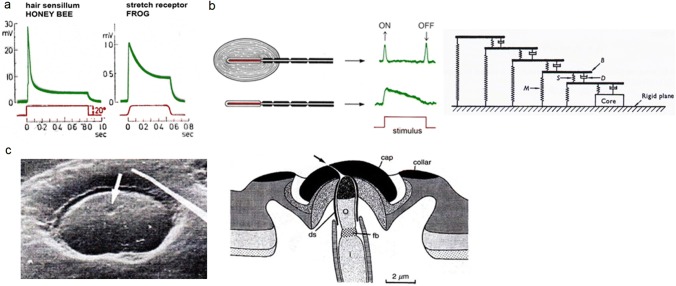Fig. 2.
Viscoelasticity: a Receptor potential response of honey bee hair sensillum and frog stretch receptor to ramp-and-hold stimuli. b Vater–Pacini corpuscle (P.C., left) and its receptor potential in response to a tactile ramp-and-hold stimulus applied with the capsule intact (above) and the capsule largely removed (below). Right: Simple mechanical analog of capsule with elasticities (springs) and viscosities (dashpots) explaining stimulus transformation (high-pass filter). c Insect campaniform sensillum. Left: scanning electron micrograph of a sensillum (longer diameter c. 15 µm) on the fly (Calliphora vicina) leg. Right: schematic of section through stimulus conducting structures according to transmission electron micrograph and showing the different components with different shading. ds dendritic sheath, fb fibrillar body, o and i outer and inner segment of dendrite. (a Fuortes 1971, modified; b left: Loewenstein and Mendelson 1965, right: Loewenstein and Skalak 1966; c Grünert and Gnatzy 1987); with kind permission from Springer-Verlag GmbH (a, c) and Wiley and Sons (b)

